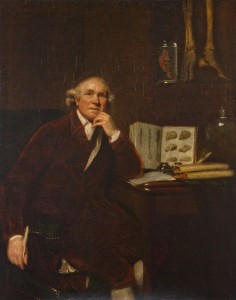The Tallest Man in England
An Irish giant was determined that his remains would be laid to rest peacefully…but an eminent London surgeon had other ideas.
Charles Byrne claimed to be the tallest man in Georgian England and few doubted his claim. He was a towering seven feet seven inches tall and crowds flocked to see him paying two shillings for the privilege.
Amazed onlookers noted that he could light his pipe from the gas street lamps without having to stoop and had to climb upstairs on his hands and knees.
Byrne’s height bought him fame, money and the attention of John Hunter, an eminent surgeon at St George’s Hospital, Tooting.
Hunter is today recognised as the father of modern surgery and one of the hospital’s great historical figures although his methods could be less than scrupulous.
Hunter made no bones about the fact that he wanted Byrne’s body for his famed anatomical collection and made the giant a financial offer in lieu of his demise.
Byrne was horrified and demanded a burial at sea to deter grave robbers. However, he reckoned without Hunter’s private desire to include him as a prize specimen in his collection.
The surgeon’s expert eye told him that Bryne was not a well man and paid an accomplice to keep on the giant’s condition.
Bryne’s fame proved short-lived as fickle Londoners sought amusement elsewhere. The 22-year-old fell on hard times when his life savings where stolen, began drinking heavily, and was found dead in his apartment in 1783.
A newspaper of the time noted that ‘a whole tribe of surgeons put in a claim for the poor departed Irishman surrounding his house just as harpooners would an enormous whale.’
Bryne’s friends dutifully carried out his last wishes escorting his body to Margate but Hunter had other plans.
He paid the undertaker £500 to remove the body from its coffin and replace it with stones to trick the pallbearers.
It was secretly returned to Hunter’s palatial home where he began the gruesome but well practised task of chopping up the corpse and boiling the flesh from the bones.
Hunter knew his actions would bring widespread condemnation so he kept the skeleton hidden from public view for several years before putting it on display when Byrne was a distant memory.
The giant’s skeleton is now on display in the Hunterian Museum at the Royal College of Surgeons, Holborn.
You can read more about the life and times of John Hunter in The Knife Man by Wendy Moore.


